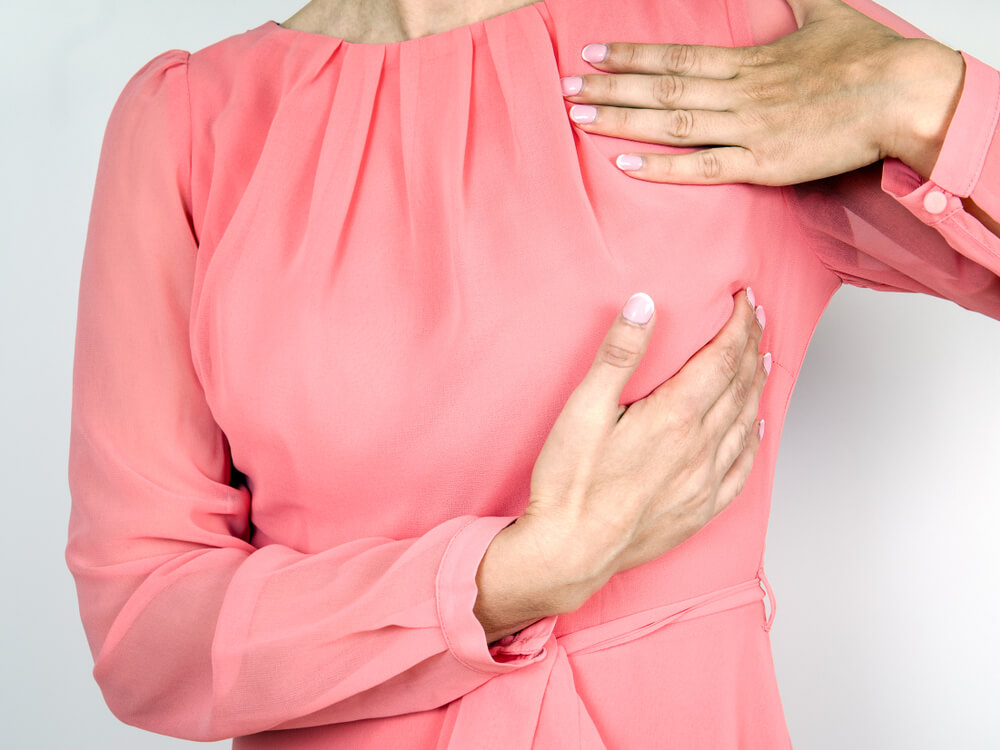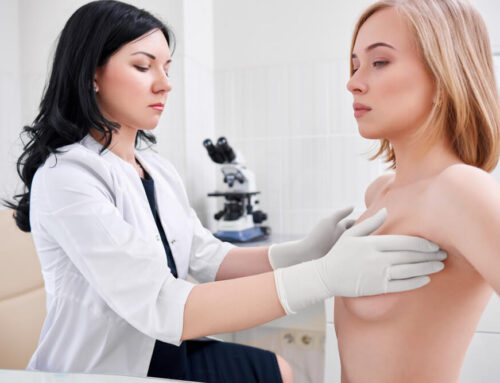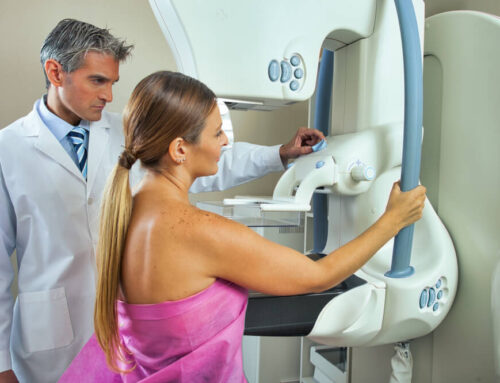Nipple discharge is a condition that occurs in women who are in their reproductive years, those who aren’t pregnant or breastfeeding, and men.
In most cases, nipple discharge is nothing to worry about, but sometimes, it can be one of the symptoms that people with breast cancer experience.
This article explores the different types of fluid that you may have, some causes of nipple discharge, and any signs of breast cancer that you should be aware of.
Overview of Nipple Discharge
There are two types of nipple discharge that people can experience:
- Unilateral: This occurs on one side of your breasts, and we usually associate it with ectasia, cancer, or intraductal papilloma.
- Bilateral: This is when fluid comes out from both breasts, and most of the time, it occurs when the patient is going through hormonal changes or has thyroid disease.
Also, the fluid can come from one breast duct or multiple ducts. However, if only one duct is involved, it is more likely to cause a breast condition.
That said, sometimes, patients who have nipple discharge can also experience other symptoms that could indicate that they have another condition:
- Fever: This could be a sign of a breast infection or mastitis.
- Missed periods: This is common in pregnant women or those who have hyperprolactinemia, which raises prolactin levels. This is a hormone that the pituitary gland produces to help with breast development and breastfeeding.
- Breast mass: This, together with discharge, could be a sign of breast cancer.
Causes of Nipple Discharge

Did you know that you can have a normal or abnormal discharge?
Discharge that is considered normal affects both breasts and is released when you squeeze your nipples.
However, abnormal discharge comes out from one breast and occurs spontaneously without stimulation.
So, what are the causes of a normal nipple discharge?
- Pregnancy: This can be normal during pregnancy, especially when the first secretion of mammary glands, which we refer to as colostrum, starts flowing. Many women have a thin and light-yellow discharge after they give birth, which can then become thicker and milky white.
- Stimulation and irritation: This causes fluid to come out from the nipples when women wear an improperly fitting bra or rough clothing.
Abnormal discharge can develop when the patient has:
- Fibrocystic breasts: It is common for premenopausal women to have fibrocystic breasts – when their breast tissue feels lumpy and painful. As a result, they may have yellow or brown discharge before they get their period.
- Infections: Mastitis is a breast infection that can cause a yellow-green nipple discharge. Patients also report having fever, pain, or breast tenderness.
- Mammary duct ectasia: This is the term we use to refer to blocked milk ducts. It usually happens when women are nearing menopause or those who’ve already gone through their menopausal period. It causes the ducts to widen and get clogged with brown, black or green nipple discharge. The patient also experiences nipple tenderness and redness.
- Galactorrhea: This is another term for milky discharge, and it can occur in women who are and aren’t breastfeeding, men and children. Its main cause is hyperprolactinemia.
- Intraductal papillomas: These are wart-like lumps that are benign and affect one duct. They can produce a clear and bloody nipple discharge in women who haven’t been through menopause.
Moreover, discharge that comes out of the breasts can also be a side effect of birth control pills. Sometimes, we also associate it with other medications, such as:
- High blood pressure medications.
- Antidepressants.
- Sedatives.
- Anise.
Discharge Can Also Affect Men
Men can also experience nipple discharge if they have:
- Testosterone deficiency.
- Gynecomastia, which causes breast enlargement.
- Pituitary tumor.
- Breast cancer.
The condition is not very common in men, so patients should immediately see their doctor if they notice a discharge coming out of their nipples.
In addition, babies may also have discharge right after birth, as their mother’s hormones are still present in their bodies. However, this disappears after a few days.
Now that we’ve explored the causes of abnormal and normal nipple discharge and how it can affect men and babies, we can move on to the next section.
When It is a Sign of Breast Cancer
Although discharge is rarely a symptom of breast cancer, it can be a warning sign when it is in its preinvasive stage, especially in individuals who are over 40.
Also, patients can have discharge that affects one side of their breasts and breast cancer symptoms, such as skin changes, nipple inversion, or a breast mass.
We also associate a bloody nipple discharge with cancer, but this can also be clear or milky.
That said, it is best to see a physician to evaluate your symptoms and determine the causes of nipple discharge that you might have.
How We Diagnose It
When you visit your doctor’s clinic to check your discharge, they may ask the following questions to know more about your medical background:
- Do you have discharge from one or both nipples?
- Are you on any medications?
- Are you pregnant or breastfeeding?
- Does the fluid come out when you squeeze your nipples?
At Breast Care Center Miami we also offer these tests to help us provide a diagnosis:
- Biopsy: During this procedure, we remove a small sample of your breast tissue to check whether cancer is present.
- Mammogram: This produces an X-ray image of your breasts to help us look for cancers.
- Ductogram: We use a mammogram and an injected contrast material that help produce an image of the milk ducts.
- Ultrasound: This test involves the use of sound waves that create images of your inner breast tissue.
How We Treat Discharge That Comes Out Of The Breasts
If you have developed discharge during your pregnancy or while you’re breastfeeding or going through hormonal changes, you may not need any treatments.
We usually prescribe antibiotics if there’s an infection. However, if you have an abscess, we may have to drain it.
Some patients may also undergo surgery if they have breast cancer or intraductal papilloma symptoms. We may also recommend this route for those with a bloodstained discharge, even if the tests don’t indicate any abnormalities.
When To Seek Medical Help

Patients who have discharge that comes out of the breasts rarely receive a breast cancer diagnosis, but it could be a sign of another condition that requires treatment.
You should see a doctor if you’re menstruating and your nipples still have discharge after your next menstrual cycle. Some women who have gone through menopause and have fluid that affects one breast should also seek medical help.
In addition, it is best to see a physician if you meet any of the following criteria:
- Having a bloody nipple discharge.
- Being over 50.
- Discharge that comes out on its own, without stimulation.
- Having other symptoms such as pain, redness, or swelling.
Book Your Appointment Today
Having discharge coming out of your nipples can be alarming especially if you’re not breastfeeding or you’re a man. We don’t usually associate it with cancer, but tests can help us evaluate your symptoms and milk ducts in more detail.
For instance, a mammogram can help spot tumors, while a biopsy can check if the breast tissue contains any cancerous cells.
Our Breast Care Center Miami team specializes in breast care health and meets many patients with different medical backgrounds. If you’re breastfeeding, planning to get pregnant, or just want to learn more about abnormal and normal nipple discharge, give us a call. We’re open on weekdays from 9:00 a.m. to 5:00 p.m






